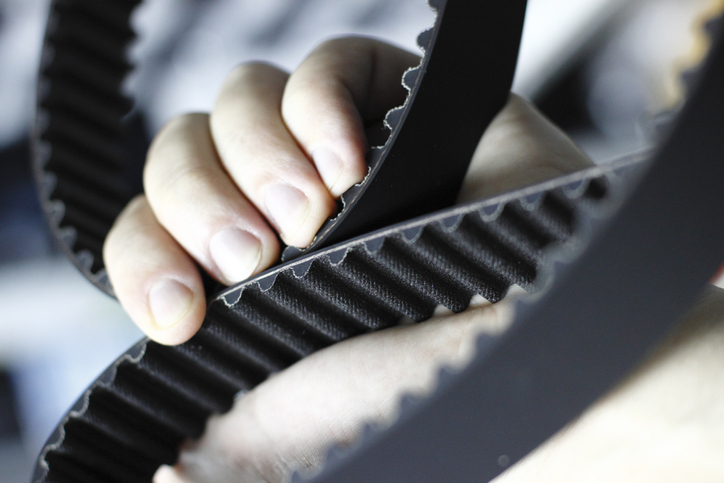
Things often go wrong with people’s cars because they didn’t have something replaced when they should have. This applies to tires, oil, and the timing belt. Replacing the timing belt at the right time helps you avoid getting stuck on the side of the road.
What’s a Timing Belt
Although similar to a drive belt, a timing belt features “teeth.” Today, it’s common to find these belts instead of metal chains. This belt connects the gears of the camshaft and crankshaft. As part of a car’s valve timing, the two must work in combination.
Modern timing belts are typically made of neoprene or rubber, again with teeth. Regardless of the material, steel or strong fibers run the entire length of the belt. For that reason, they’re much quieter compared to metal chains. Also, rubber or neoprene timing belts are much stronger and last longer.
Like other belts in your car’s engine, a timing belt will eventually wear out. Unfortunately, that usually happens without any notice. To feel confident while driving, you need to have it replaced at the correct time.
Replacing the Timing Belt
If you drive an older model car and are relatively good at working on it, you could change the timing belt. Otherwise, you’ll need to have the work done by a qualified technician. This applies to newer vehicles as well. After all, it’s not always easy to access the timing belt in these cars.
Instead of waiting for the timing belt to break, look at it each month. In particular, make sure it’s not missing any of the teeth. Also, look for any cuts, tears, or heavily worn areas. In addition to wearing down, antifreeze and motor oil can damage a timing belt if any gets on it.
As far as when to have the timing belt replaced, there’s not a straightforward answer. Besides a visual inspection and having it checked during regular maintenance, check the manufacturer’s manual. That way, you’ll learn what the automaker recommends for optimal performance. Often, manufacturers advise car owners to replace the timing belt every 30,000 miles.
Possible Signs It’s Time to Replace the Timing Belt
If your car’s engine doesn’t perform as well as it usually does, that might indicate a loose belt. You might even notice a squealing or clicking sound coming from the engine’s front area. In that case, the belt’s likely defective or missing some of the teeth. Backfires are another telltale sign that you need a new timing belt.
The way you drive can affect the condition of the timing belt. So try to avoid a lot of stops and starts. In addition, don’t accelerate quickly. After all, that can increase the heat under the hood, damaging the belt.
You might also like: Why You Should Clean Pollen Off Your Car
An Outstanding Service Center
At Barbour-Hendrick Honda Greenville in Greenville, North Carolina, you’ll discover a great service center. A technician will gladly assist with all your maintenance needs, including a new timing belt.
Disclaimer: The stock image is being used for illustrative purposes only, and it is not a direct representation of the business, recipe, or activity listed. Any person depicted in the stock image is a model.

